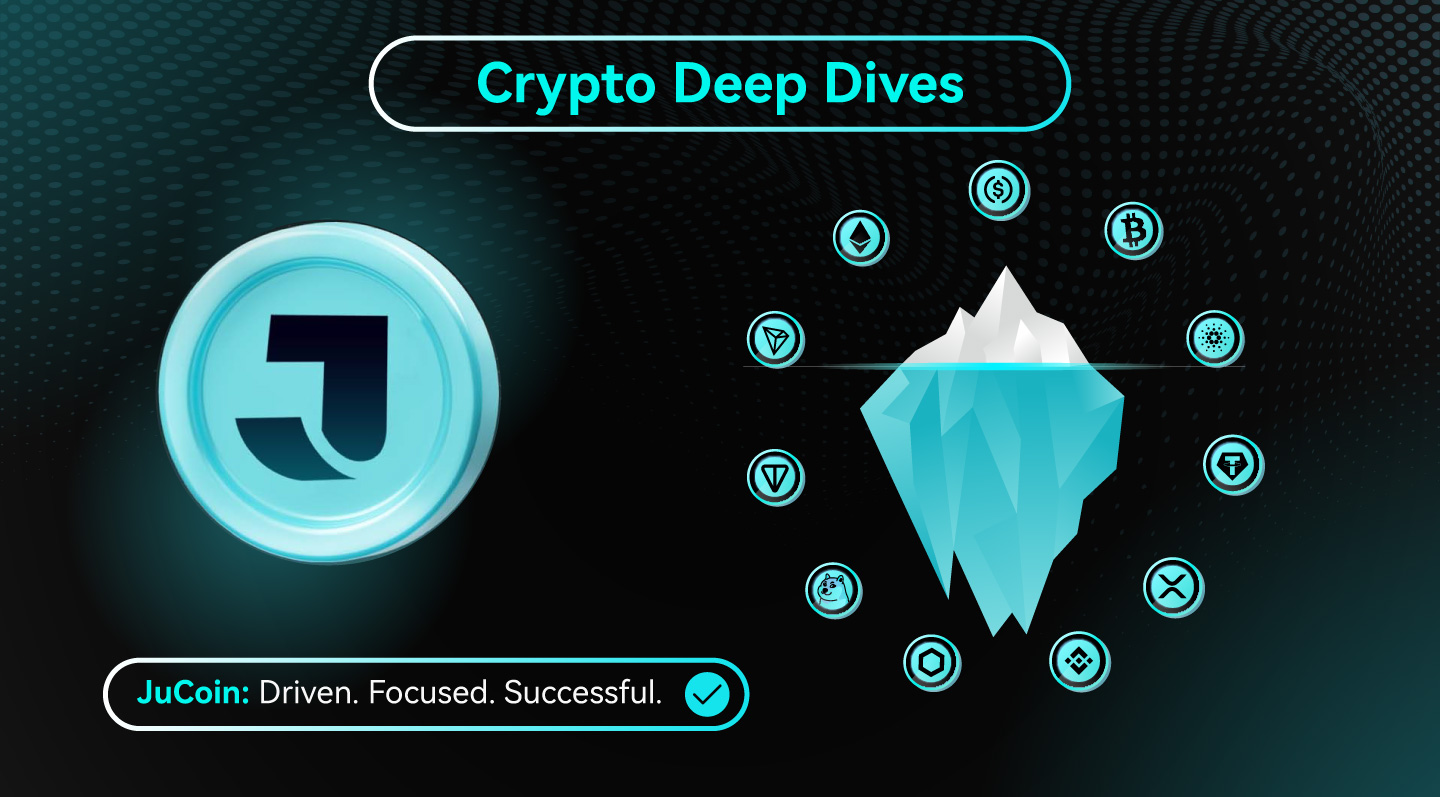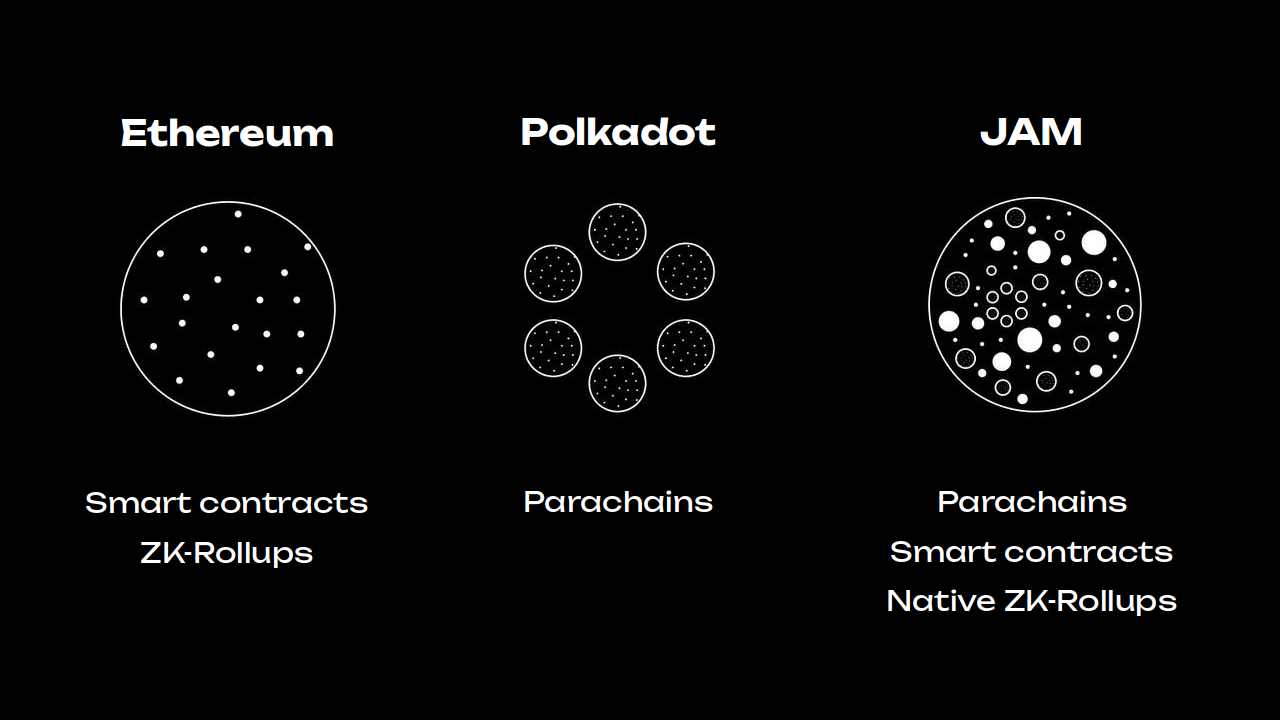
Key Takeaways
- Polkadot 2.0 introduces major technical upgrades, including Asynchronous Backing and Gavin Wood’s JAM Protocol, significantly improving network scalability, performance, and cross-chain interoperability.
- Strategic integrations such as Snowbridge enable seamless DOT/KSM transfers, strengthening Polkadot’s connectivity to Ethereum and enhancing multichain asset management capabilities.
- Enterprise adoption is accelerating through Agile Coretime optimizations and partnerships like Asphere’s collaboration with Web3 Foundation, enabling no-code deployment of enterprise-grade blockchain rollups.
- Polkadot’s ecosystem growth remains robust, with over 750 active developers, strategic integrations such as FIFA’s mobile gaming initiative, and regional expansions like DOT support on Latin American exchange Ripio.
- OpenGov’s transparent governance approach allows effective treasury management and strategic allocation of resources, exemplified by proposals like Hydration’s 5 million DOT liquidity initiative.
Blockchain ecosystems are continuously evolving, driven by technological advancements, adoption incentives, and developer innovation. Among these, Polkadot has consistently positioned itself at the forefront of blockchain interoperability and scalability. With the launch of Polkadot 2.0, this ecosystem is undergoing a significant evolution, introducing transformative upgrades like Asynchronous Backing, the revolutionary JAM Protocol conceptualized by founder Gavin Wood, and Agile Coretime optimizations. Complementing these developments, Polkadot 2.0 has witnessed critical milestones, including the implementation of Snowbridge for DOT/KSM transfers and strategic integrations enhancing ecosystem adoption.
This Crypto Deep Dives article dives deeply into the technical underpinnings, ecosystem developments, strategic partnerships, and long-term implications of Polkadot 2.0’s ambitious infrastructure expansion.
The Vision Behind Polkadot 2.0: Enhanced Performance & Flexibility
The introduction of Polkadot 2.0 represents a major step forward for the Polkadot ecosystem, aiming to significantly improve scalability, network performance, and flexibility. Central to these enhancements is the concept of Asynchronous Backing. Traditionally, blockchain protocols face limitations due to synchronous validation processes, which can slow down transaction throughput and network finality. Polkadot 2.0’s adoption of Asynchronous Backing decouples parachain block production from relay-chain finality. This separation allows parachains to produce blocks independently and asynchronously, dramatically boosting efficiency and scalability. The result is a network that achieves enterprise-grade finality in approximately 18 seconds, a significant improvement compared to the 14-day finality of some traditional Layer 1 chains.

Additionally, Gavin Wood’s new JAM (Joint Abstraction Model) Protocol represents a forward-thinking approach to interoperability and application-specific execution. JAM introduces a more efficient and flexible model for parachains to interact and execute smart contracts, ensuring minimal latency and increased throughput. These innovations, combined with Agile Coretime optimization—a strategy to dynamically allocate validator resources based on parachain activity—further enhance Polkadot’s scalability and resource utilization.

Technical Innovations: Hyperbridge Integration & XCM Protocol
Polkadot’s infrastructure expansion has included notable advancements in cross-chain connectivity and EVM compatibility, essential for integrating diverse blockchain environments seamlessly. One standout integration is Hyperbridge, which streamlines compatibility between Ethereum Virtual Machine (EVM)-based chains and Polkadot’s Substrate-based parachains. This integration significantly simplifies asset and smart contract transfers between Ethereum and Polkadot networks, making Polkadot a more accessible platform for developers familiar with Ethereum’s ecosystem.
In addition, the Cross-Consensus Message (XCM) protocol has matured significantly. XCM allows parachains to communicate and execute transactions across the Polkadot network in a trustless manner. This protocol is integral to facilitating seamless asset transfers, enabling more sophisticated DeFi applications, and promoting robust multichain interoperability. XCM’s ongoing enhancements align closely with Polkadot 2.0’s vision of a unified, interconnected blockchain ecosystem, capable of serving complex enterprise and consumer use cases with unmatched efficiency.
Snowbridge & Enterprise-Grade Infrastructure
A significant milestone in Polkadot 2.0’s recent infrastructure advancement is the launch of Snowbridge, a trustless Ethereum-Polkadot bridge designed to facilitate DOT and KSM asset transfers between these major blockchain ecosystems. Snowbridge plays a pivotal role in realizing Polkadot’s broader interoperability ambitions, providing a seamless mechanism for users and developers to move assets without relying on centralized exchanges or custodians. By enabling direct DOT/KSM transfers, Snowbridge effectively extends Polkadot’s usability across multiple chains, contributing significantly to the platform’s liquidity, adoption, and strategic relevance in cross-chain finance.

Enterprise adoption is also enhanced by Polkadot’s infrastructure upgrades. With the network achieving finality in a matter of seconds rather than days, Polkadot becomes an attractive platform for enterprises requiring rapid, reliable, and secure transaction settlements. Asphere’s strategic partnership with the Web3 Foundation exemplifies this trend, providing no-code deployment of rollups tailored explicitly for enterprise applications. This partnership significantly lowers barriers to enterprise blockchain adoption, accelerating mainstream institutional engagement with Polkadot’s robust infrastructure.
Ecosystem Growth & Strategic Partnerships
Polkadot’s impressive technical advancements have been matched by substantial ecosystem growth and strategic alliances. Currently boasting over 750 active developers and surpassing 2,000 monthly code commits, Polkadot’s developer community continues to expand, indicating robust, sustained momentum and active innovation. One high-profile parachain onboarding is Mubert, an innovative AI-driven music platform, which highlights Polkadot’s growing appeal among cutting-edge, creative industries.
Strategically, Polkadot has formed partnerships with leading entities, notably FIFA for mobile gaming integration, significantly extending Polkadot’s visibility and accessibility in global entertainment markets. Additionally, the Latin American crypto exchange Ripio has integrated support for DOT, enhancing regional accessibility and adoption. These partnerships significantly expand Polkadot’s global footprint and reinforce its strategic position as a versatile and widely recognized blockchain infrastructure platform.
Financial Strength & Governance: OpenGov & Treasury Management
Polkadot maintains robust financial fundamentals, with a market capitalization of approximately $7.16 billion and a fully circulating token supply of around 1.5 billion DOT. Beyond these figures, Polkadot’s innovative governance model, OpenGov, allows decentralized, transparent management of the treasury, enabling community-driven funding decisions. A notable recent proposal includes Hydration’s initiative, seeking a strategic deployment of 5 million DOT tokens to enhance liquidity within Polkadot’s DeFi ecosystem. Such governance decisions demonstrate a proactive and dynamic approach to strategic treasury utilization, actively supporting initiatives that add long-term value to the network.
Polkadot 2.0: DeFi Expansion & Real-World Adoption
Decentralized finance (DeFi) has emerged as a crucial growth area for Polkadot, with multiple initiatives actively working to expand DeFi capabilities across its ecosystem. Recent integrations and partnerships are rapidly extending Polkadot’s utility and increasing its appeal among DeFi participants. Notably, significant DeFi platforms and financial institutions are leveraging Polkadot’s interoperability and enhanced scalability to launch innovative products and services.
The network’s robust infrastructure has also attracted various decentralized applications and financial services providers aiming to offer faster, more secure, and more cost-effective solutions to users. These integrations further demonstrate Polkadot’s ability to deliver meaningful real-world benefits and substantiate its long-term potential as a core component of the decentralized finance landscape.
Polkadot 2.0: A Blueprint For The Future of Blockchain Infrastructure
Polkadot 2.0’s ambitious infrastructure expansion represents a major evolution in blockchain scalability, interoperability, and adoption. By introducing groundbreaking technologies such as Asynchronous Backing, Gavin Wood’s JAM Protocol, and Snowbridge, Polkadot has substantially enhanced its foundational capabilities. Complemented by strategic ecosystem partnerships, rapid developer growth, and robust governance practices, Polkadot is well-positioned to become a dominant platform in blockchain’s multichain future. As these innovations continue to unfold, Polkadot’s infrastructure expansion will serve as a powerful blueprint for next-generation blockchain ecosystems, setting a high standard for technical excellence and strategic vision in the Web3 landscape.





